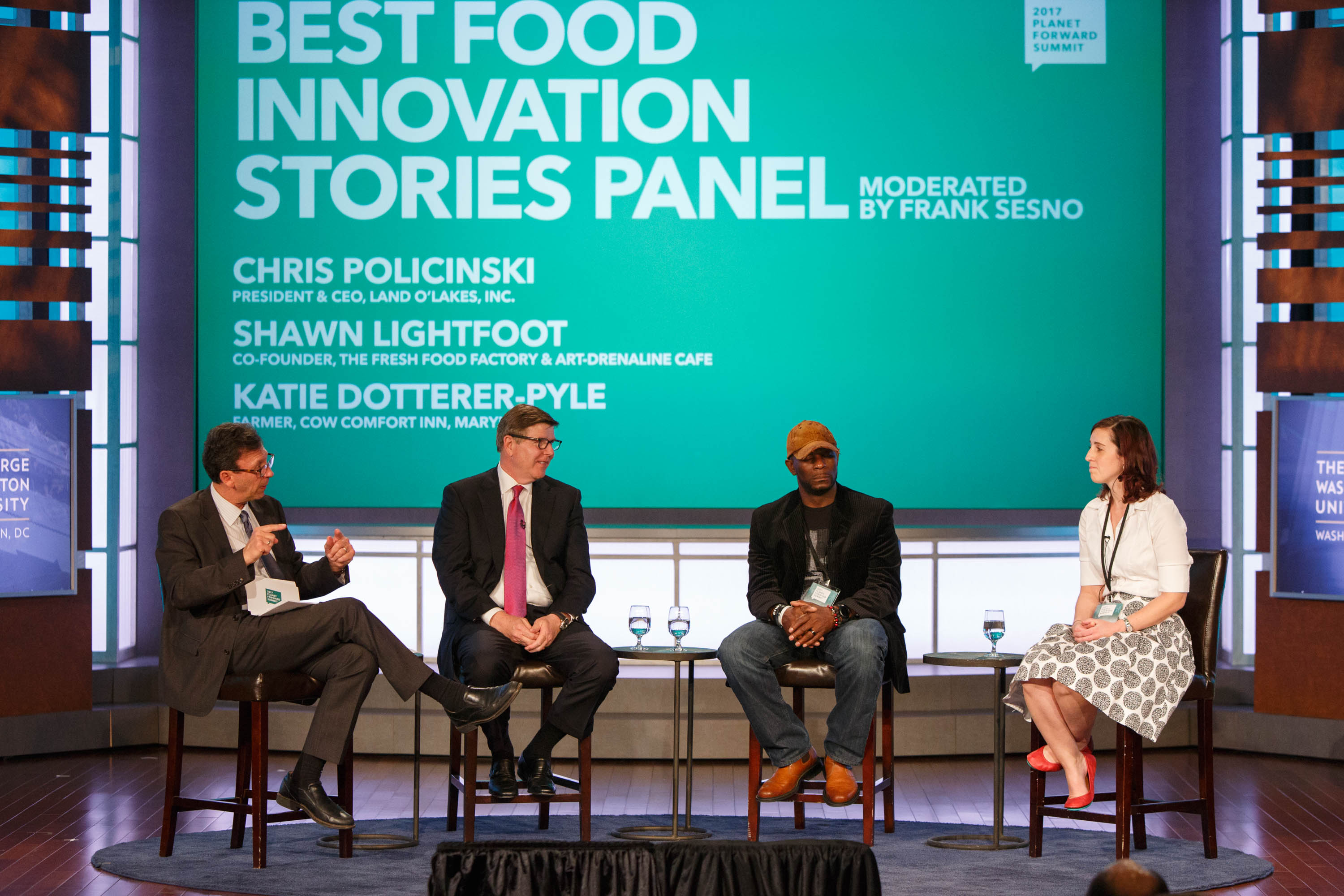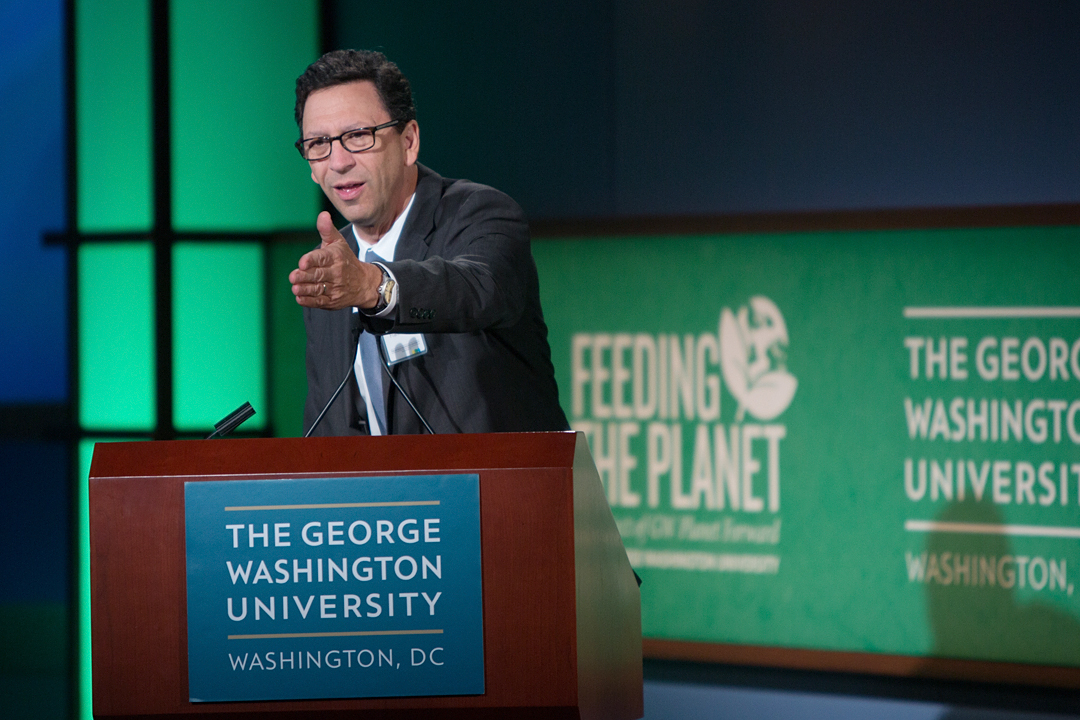By Ruth Steinhardt
Experts from major companies, publications, universities and nonprofit organizations gathered with students from more than 40 colleges and universities at the George Washington University last week for Planet Forward, a two-day summit on the power of storytelling to spur action on sustainability.
“Now more than ever we need to tell compelling stories because we live in a time of polarized politics, and we see the world through the prism of our own ideologies too much,” said Frank Sesno, director of the School of Media and Public Affairs and founder of Planet Forward.
Sustainability activists, Mr. Sesno said, need to learn and use storytelling basics—compelling characters, creative framing and solid data—to compel audiences to action on urgent issues like food, water, energy and biodiversity. Students attending were majors in a wide range of fields, including journalism, film, engineering, art, public health, international relations and environmental science.
“Good stories can [expose people] to new ideas and innovations—the kinds of things we need to move the planet forward,” Mr. Sesno said.
The summit opened with a talk on character-driven storytelling with Discovery Networks Europe Creative Director James Gilbey and continued with sessions on virtual reality and Native American storytelling traditions, as well as a lunchtime discussion with Google Sustainability Lead Kate Brandt. Later, attendees broke into small groups to discuss issues like complex storytelling and communicating across political divides.
A Thursday panel on food innovation included Katie Dotterer-Pyle of Maryland’s Cow Comfort Inn, whose Facebook videos about life on a dairy farm have hundreds of followers; Shawn Lightfoot, co-founder of the Fresh Food Factory, which employs low-income residents of Southeast Washington, D.C., on an urban farm; and Chris Policinski, president and CEO of Land O’Lakes, Inc., which is owned and governed by farmers and local agricultural cooperatives.
Panelists said educating consumers was key to the development of more sustainable agriculture and food.
“There are a lot of misconceptions about what [farmers] do and that breaks my heart,” said Ms. Dotterer-Pyle, who discussed innovations in milking like humane automated machines and an app that individually tracks all 500 of her cows.
Mr. Policinski said opportunities exist “to enrich the conversation around sustainability by connecting farmers with consumers and everyone in the middle” of the food supply chain.
He pointed to Land O’Lakes’ international development efforts as an example. The company collects data on best agronomic practices in particular regions and climates, then shares that data with local farmers—“like writing a prescription”—so they expend the precise amount of resources necessary for strong crop growth.
After each panelist’s explanation of his or her cause, SMPA Professor Imani M. Cheers suggested ways they might tell that story more effectively and innovatively.
To Ms. Dotterer-Pyle, she suggested attaching GoPro videos to the cows so consumers could experience a day in the animal’s life; to Mr. Lightfoot, she recommended following the vulnerable populations, particularly returning felons, who work at the Fresh Food Factory. To Mr. Policinski and Land O’Lakes, she recommended a comprehensive social media campaign with a recognizable hashtag—maybe #KnowYourCrops.
Mr. Policinski referenced a corporate dictum that “nothing kills a bad product faster than good marketing.”
“This is the opposite: We have a great product in agriculture, and we’ve been rotten storytellers,” he said. “The product is not perfect, but that’s one reason we need to connect, because we can learn and evolve.”



